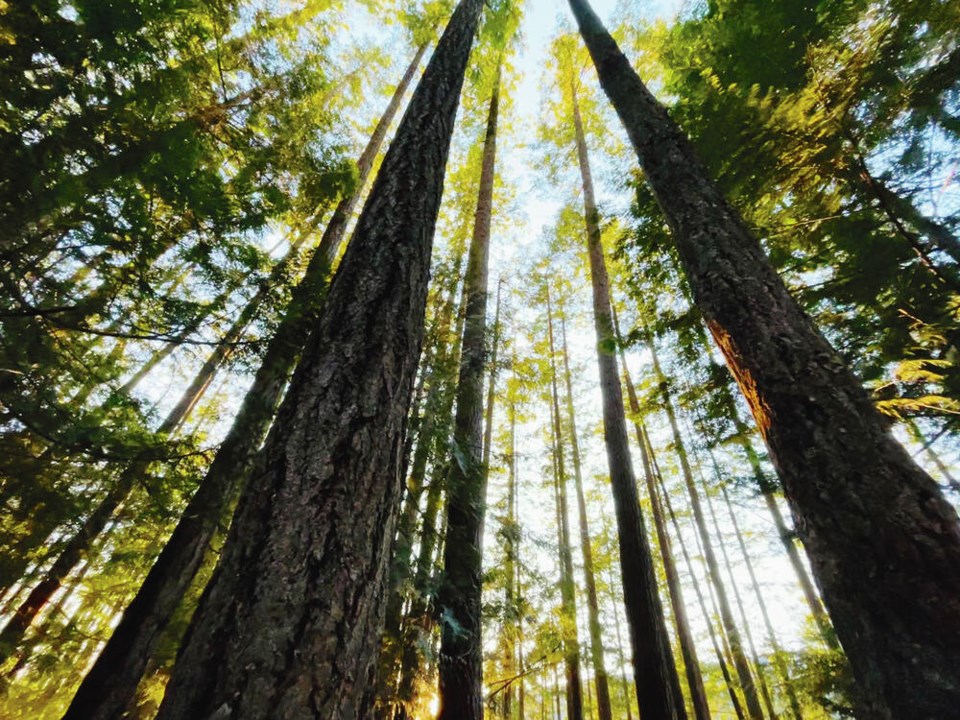A commentary.
In communities up and down the coast, hard-working forestry families are worried about the rising cost of living and whether they will still have their jobs by the end of the year.
In 2023, an estimated 4,000 coastal forestry-dependent workers lost their jobs. Today, more than 44,200 people living in coastal communities rely on an unstable forest sector for their livelihoods.
Why is this happening? Because we have been focusing on the wrong priorities and failing to attract investment in domestic manufacturing of second-growth forests.
Since its inception, the coastal forest sector has relied on high-value old growth and, more recently, raw log exports, to cover its high costs of harvesting. Government policy changes have forced a reduction in these practices, exposing aging, inefficient and undercapitalized mills.
Hundreds of millions of dollars are needed to retool and restructure sawmills and pulp mills for global competitiveness and to cost-effectively transition from old-growth to second-growth forests. Domestic facilities must add value to traditionally low-value logs to facilitate their harvest — accessing new, mass timber markets and eliminating unnecessary waste.
Coastal forestry has a long-standing negative reputation for investment, stemming from many factors including environmental opposition and regulatory uncertainty. However, investments in manufacturing are crucial to make all coastal tree species economic, secure a viable return for tenure holders, and create a stable fibre supply for B.C. mills.
In today’s era of economic reconciliation, First Nations are major holders of forest tenures and meaningful participants in the log market. But this is occurring at a time when domestic log values do not cover harvest costs, threatening to make these tenures uneconomic.
This puts First Nations, along with forestry workers and communities, in a vulnerable position: reliant on publicly traded companies and foreign investors to direct capital toward a notoriously risky sector to secure their future.
In 2022, coastal forestry contributed an estimated $2.64 billion in government revenue for important services like hospitals and schools. To keep dollars flowing, new approaches are required to address the underlying issues of the sector.
There are no easy answers, but we can’t keep doing the same thing and expect a different result. Provincial and federal governments shouldn’t assume they can legislate away forest-sector issues. We need to find solutions to these decades-old problems.
One viable solution includes First Nations equity investment beyond forest tenures. Iskum Investments, a consortium of more than 20 First Nations from across the coast, was formed for this purpose.
Forestry is a primary resource sector within the Iskum Nations’ territories; they share the same reliance on forests as non-Indigenous forestry workers, and the same goal of achieving world-leading forestry practices balanced with well-paying, family-supporting jobs.
First Nations have already demonstrated their success as forest managers, effectively balancing economy and stewardship, culture and environment, for both current and future generations.
First Nations have also proven themselves more than capable of large-scale investments that drive significant return in other sectors: from Squamish Nation’s Sen̓áḵw housing project in Vancouver, to Tsawwassen Mills’ retail success, to Snuneymuxw’s tourism and land development projects in Nanaimo. These initiatives benefit all British Columbians and align with provincial goals and objectives.
Iskum Investments is similarly capable of achieving large-scale investments and contributing to a secure future for the wood products business through its collaborative efforts with other First Nations, governments, and financial institutions.
First Nations equity investment in business is a practical approach to achieving true economic reconciliation and Indigenous self-determination, growing the economic pie for everyone.
The Iskum Nations are eager to invest in the full supply chain of coastal forestry, but to do so there must be a shared vision for change.
Government loan guarantee programs are a good start, but they are unlikely to bolster the level of investment needed to address systemic issues. Equity is also required to secure long-term capital investments and, most importantly, secure paycheques for workers.
The challenges of coastal forestry are significant, requiring new approaches to old problems. The Iskum First Nations are ready and willing to be part of the solution, and are inviting governments to join them in the same canoe to collaboratively paddle on this important journey together.
Emchayiik Robert Dennis Sr. is a former chief councillor of Huu-ay-aht First Nations and chair of Iskum Investments, a consortium of over 20 First Nations from across the southern B.C. coast, that have come together to support coastal forestry revitalization.
Shannon Janzen, RPF, is a strategic adviser to Iskum Investments and former vice-president and chief forester of a major forest company, who now supports the Iskum Nations in their vision for economic and environmental reconciliation.
>>> To comment on this article, write a letter to the editor: [email protected]



